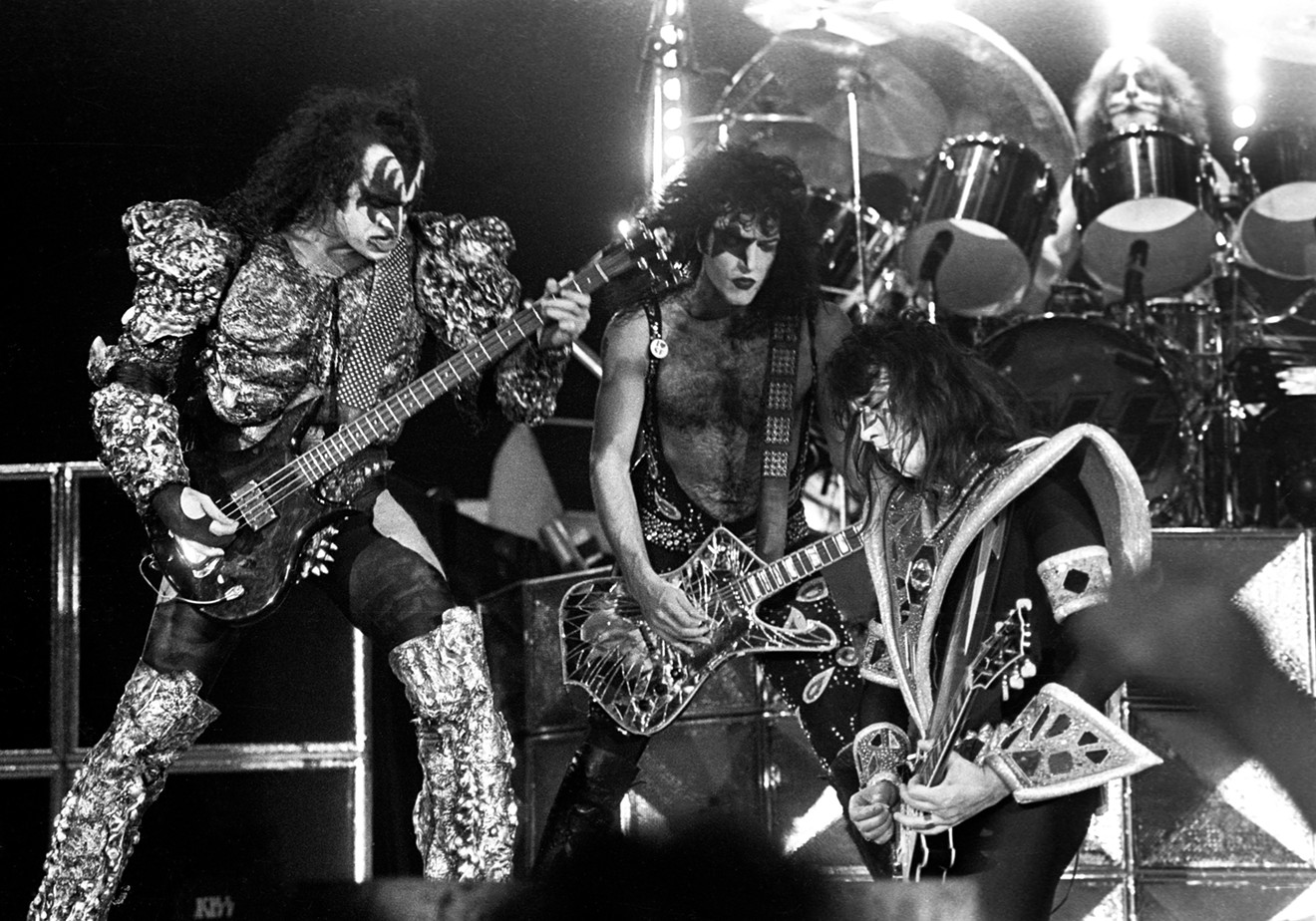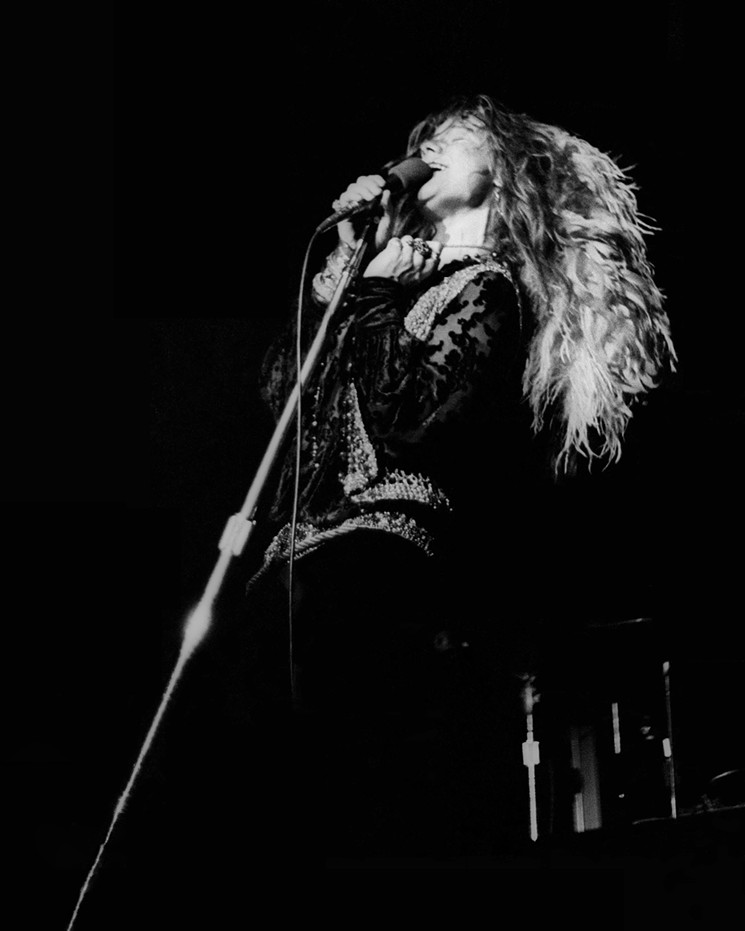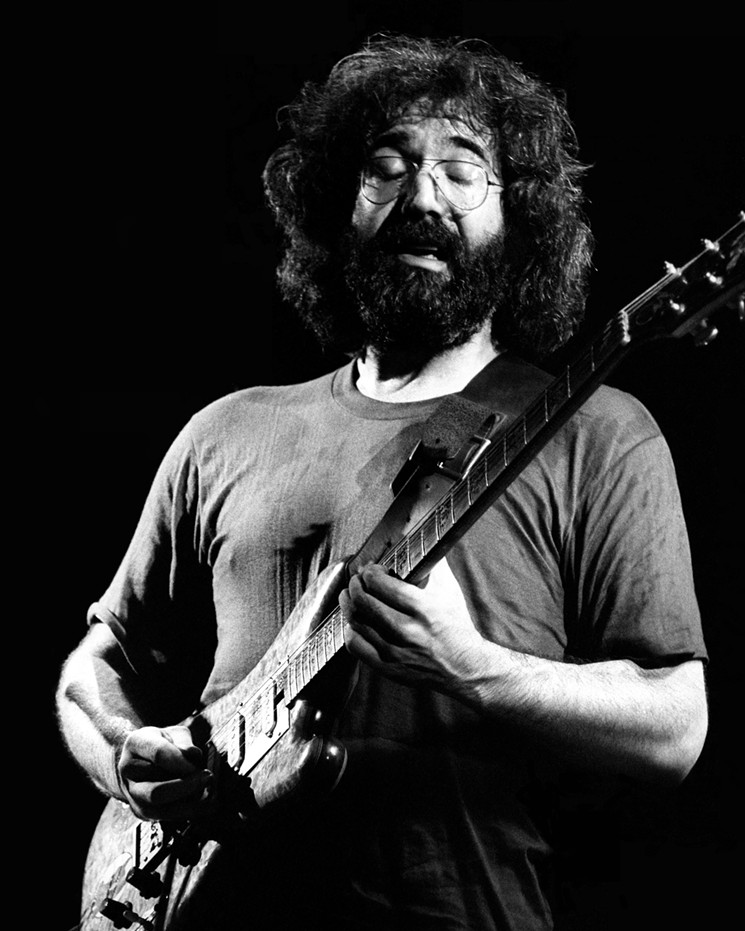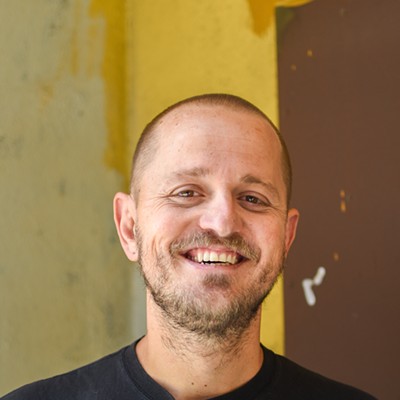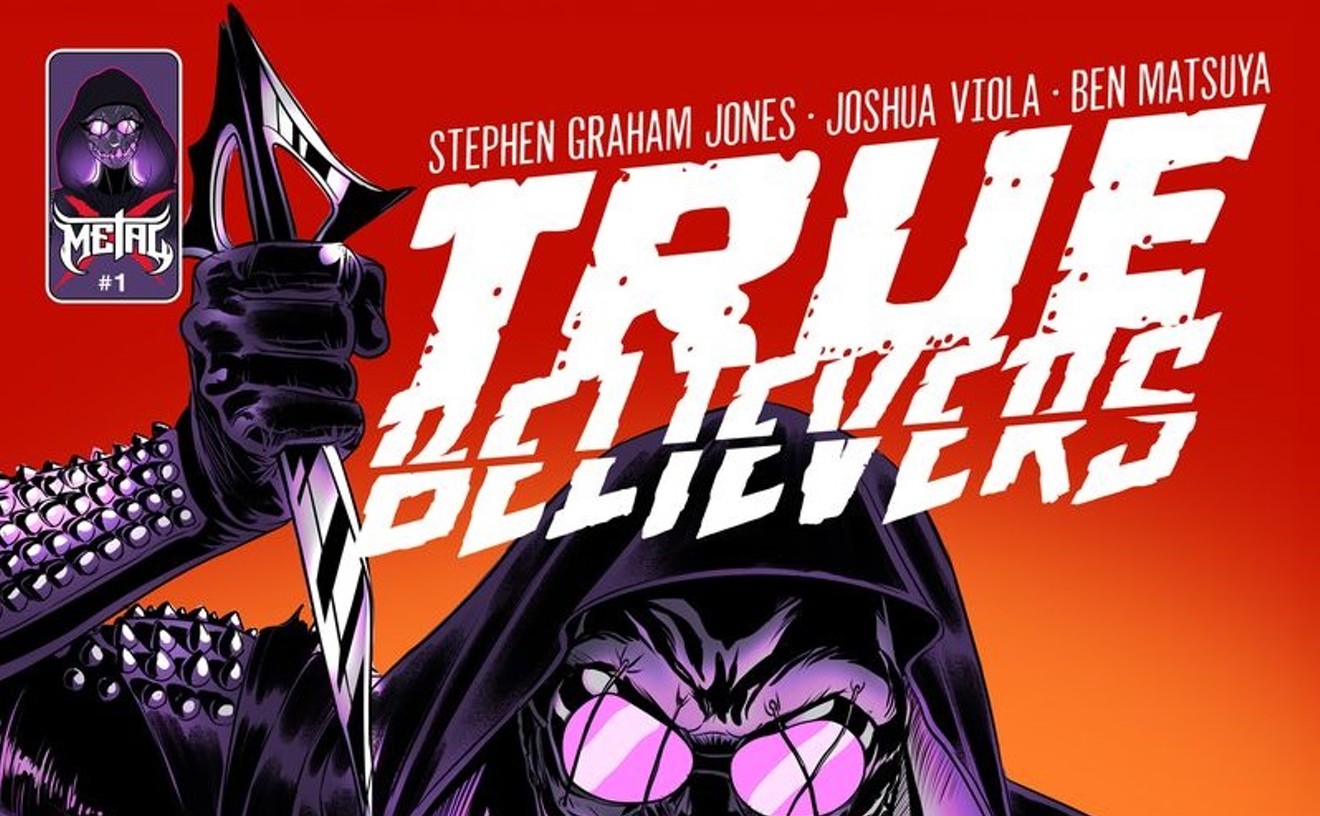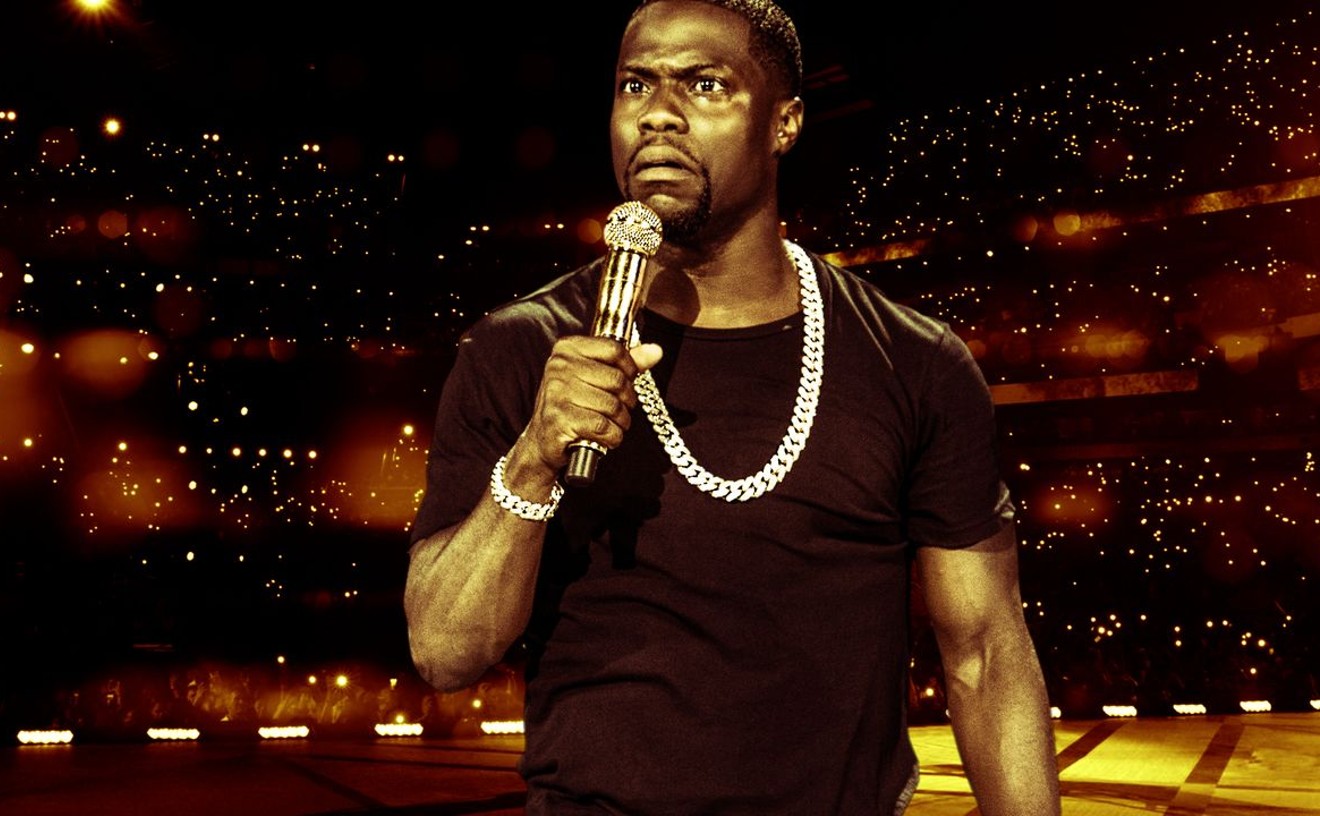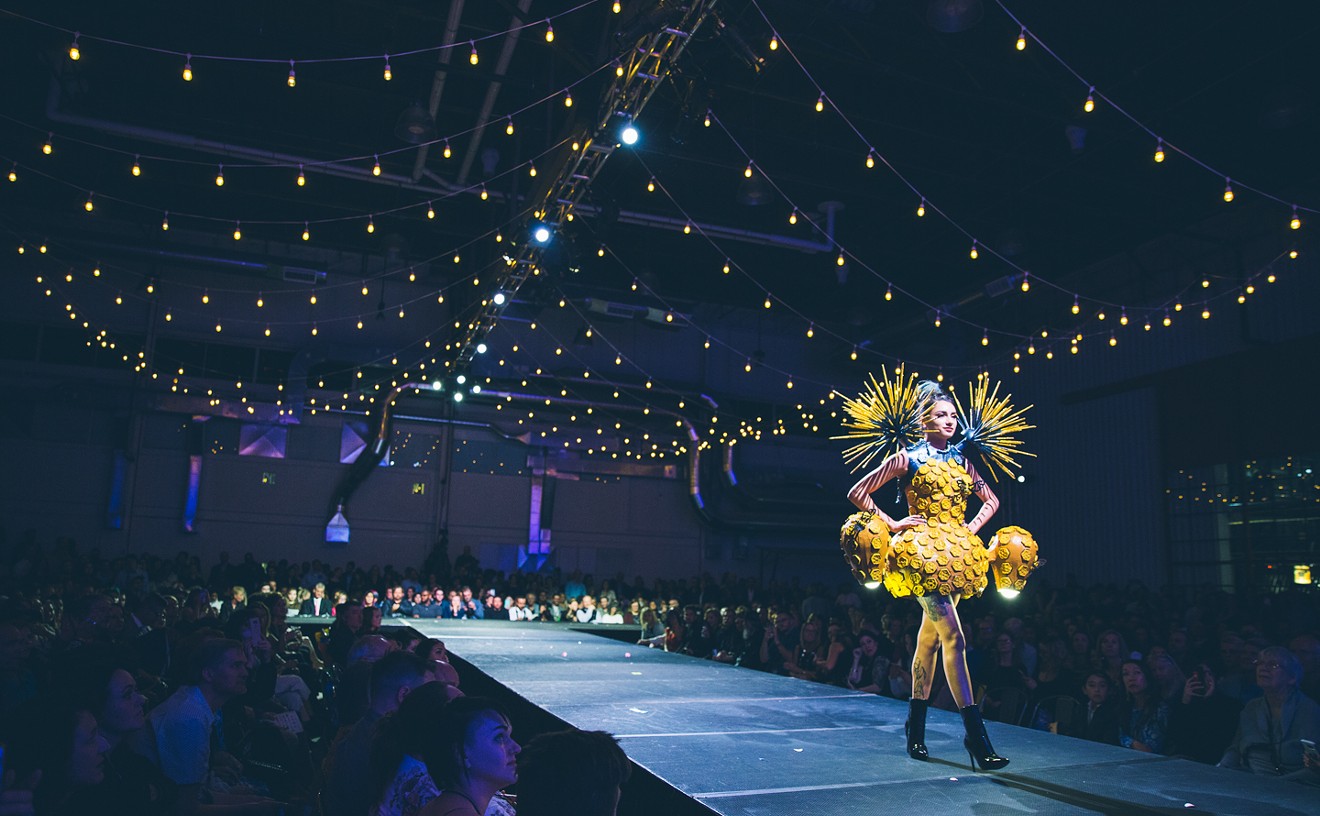Photographer Larry Hulst has been shooting concerts since the mid-'60s. Over the decades, he's watched photography transition from film to digital. Once he was one of a handful of people shooting photos at a show; today hundreds of people are, albeit most with cell phones raised above the crowd. He has worked for Getty, and his images of rock stars have been in magazines including Guitar Player and Rolling Stone.
Westword caught up with Hulst to talk about his career and his photos that are on display through May 21 at the Colorado Springs Fine Arts Center.
Westword: Tell me about the work you're bringing to Colorado Springs?
Larry Hulst: I'm bringing the best photographs I ever created, about 85 of them, to the Colorado Springs Fine Arts Center. They're going to be all black and white. I did all the processing of the film. I did all the photography. I did all the creating of the images. They're going to be photographs — mainly the best rock-and-roll musicians from our times that I've taken photographs of. I missed a few of them. Can't get them all, but I've got a good amount of them.
So I've got Led Zeppelin, you've got some Jimi Hendrix, you've got some Eric Clapton, you've got some Grateful Dead, and a whole bunch of other ones. It ranges from photographs I took in the 1970s, including the Doors, Hendrix and Janis Joplin to new artists. Lauryn Hill is the last artist I've got in the exhibit, and she was shot at the Mammoth Event Center, as the last artist that played there before Chuck Morris converted it to the Fillmore Auditorium.
My photographs were taken mainly in San Francisco. I moved here about 23 years ago, and I've been shooting concerts in Colorado, concerts at Red Rocks or the Fillmore or things like that.
How did you get into this racket?
The inspiration was going to the Fillmore Auditorium [in San Francisco] and going to other music events and seeing a photographer named Jim Marshall, and I really liked his work. I thought maybe I could come away with something that was much more original than a T-shirt to remember the concert by, and so I started shooting.
When I was shooting, I was also going to American River College, and that's in Sacramento, which is just outside of San Francisco, and at American River College, I was on the newspaper staff, and I was shooting concerts and doing reviews and putting them in the college newspaper — photographs and reviews. From there, I was asked if I'd like to be able to sell my photographs at a record store named Tower Records, and this was in Sacramento, also. And so I was allowed to sell my photographs on the sidewalk in front of Tower Records. People would come in and come out by my display and tell me new bands that were playing, and even though I hadn't heard about them, I'd go shoot those new bands. So I got the word of what the new bands were that were coming up from people who were the fans of those new bands and wanted to see photographs of them. So my purpose was to try to bring some enjoyment to people, after they had been following a band for a while, with my photography.
I sold my photographs in front of Tower Records for eighteen years. At the same time, I was going to concerts and selling my photographs in the Bay Area. I came out to Colorado. I came out as a working photographer. I was working at the Air Force Academy as one of their photographers, and I worked there for eight years or nine years. Then I went to Peterson Air Force Base [in Colorado Springs]. During that same time, I'm shooting generals during the daytime and shooting rock-and-roll concerts at nighttime. That was all I needed [for fullfillment]. It was all the excitement that I was looking for.
I always tell anybody that if they could do it now, it would be very hard. The environment of concerts now does not include too much photography. I was very lucky to have shot my photographs at a time when rock and roll was still kind of young, and everybody was eager and hungry, and they wanted their photographs taken. That's what I tried to do. I shot mainly from the audience, so the perspective of all the photographs, except for maybe five when I had actual access to take the photographs, everything else was shot from my view in the audience at different concerts.
I've probably seen around 3,000 to 4,200 bands — not different bands — but different performances by bands. I started in 1964 watching, and I listened just like everybody else to the music, and I wanted to have something a little bit more personal. That was what got me into photography, and that's what keeps me going today. I still shoot concerts.
Has the process for shooting those concerts changed with new restrictions? How do you do it now?
Just a little [laughs]. Just a little. One thing is, starting in the ’60s and ’70s and ’80s, it was all film. Then after the middle of the '90s came in, it was much more of a direction toward digital cameras. With that brought better equipment. It costs a lot more to take photographs nowadays, because you have to have the very expensive cameras and all of that, versus then. You really need to be able to sell your work to be able to afford cameras and equipment nowadays. Whereas when I was doing it, everything was $100 for a camera, $50 for lenses. That hardest part about the whole thing was affording the oil to get my car to the concerts. I could afford everything else, but the oil was the most expensive.
The restrictions have taken all the fun out of it. It seems like there is an actual war — in my mind, anyway — between the publicity agents for these different bands and the photographers who are representing different media outlets to be able to get a good photograph of an artist so that a good review could be presented in a magazine or in a newspaper, which would increase the popularity of the band.
Instead, it seems publicity people don't want to give you the access and want to control everything. You lose all control of the work that you do working in the modern day. In the days of film, you had all the control. The artists were a lot younger, so they were happy to have their photographs taken, and now, the same new bands come through, but the restrictions are put onto the photographers to try and photograph, and it's a lot harder. It takes [away] a lot of the steam and the fun that I received when I was shooting with film. It's just not as much fun.
It seems like you're an actual outlaw if you have a camera at a concert and you're trying to take photographs. The priority is not the photographer who's taking the photographs. It's a weird concept. I shoot for Getty Images. Getty Images promos the history of the band indefinitely with the photographs they have. Due to some of the restrictions, the bands don't get as good of promotion because of it. In that aspect, everybody involved has lost.
To me, you end up hitting a wall, and you end up losing all the confidence and ability to really care about getting the photographs, whereas it used to be a lot of fun. Nowadays the restrictions are three songs at the most. I've seen shows where it's just thirty seconds to shoot. That aspect is not too good. When we were shooting with film, I could shoot a whole show. You got more of the thrilling moments, whereas now you've got the artists standing in front of the microphones. They don't have the time to perform well enough in front of the camera to get a lot of spectacular shots.
That makes sense. Is that because the promoters and publicists are shooting their own photos now to control the image more and spin it?
I think that Chuck Morris and Red Rocks, I think they have their own photographers and they don't get to shoot any more than the other photographers. They don't get to shoot longer.
Weird. Wow.
I don't believe. Maybe. I don't think so though.
What are the most memorable concerts you've shot?
Memorable. Led Zeppelin in 1975. Was it the Houses of the Holy or the Physical Graffiti tour? In San Diego, I was on the front row, I was on the rail. I stayed there for four hours. I drove from Sacramento to San Diego to go to the show.
It was pretty good being in crowds of 400,000 people taking photographs, and being knocked around by the crowd. I liked the physical contact of being inside the crowd, being knocked around and still getting the photographs.
One of the hardest artists I've had to shoot was Billy Idol in Sacramento. The audience was pretty enthused. You end up being pushed from one end of the stage to the other end by the audience. It was pre-mosh-pit days, but while they were bouncing up and down, I was knocked down to the ground seven different times before I got the photograph that I needed. But you keep it up. That's as much fun as anything. I go to concerts to have fun, not to look for the negative parts.
Seeing the Clash on the first night of their first tour in America in Berkeley — that was really good. And I turned around to get to see them the next night at a Rock Against Racism show. Three dollars to see the Clash was really good. Most anytime that you're going to the Fillmore or Winterland in the }70s, the most you're paying is $6 or $6.50. Nine dollars to see Led Zeppelin at Kezar Stadium. Those were the fun times. Now, it's kind of a little more expensive, and it's not as much fun when the artist gets $150 a head just to listen to them.
It was a lot more fun times back then, too, because you could afford to go and you could go more than once. Seeing the Grateful Dead — I probably saw them ninety times. I met George Harrison — that's when my photography got me to the highest point, I guess. I was going down to A&M records to apply to be a photographer for A&M Records, and I had a picture of George Harrison with me to show them my work, and they introduced me to George Harrison because of this one photograph. Next thing you know, I tried to sell it to him for gas money to get from L.A. back to Sacramento. He couldn't give me the $20, but he asked for a free photo, and I got his signature on the photo, so that was worth it.
There's an awful lot of good ones. I like free concerts, and I've gone and seen more than a few of those out in Golden Gate Park, in San Francisco, seeing shows. I hope the next one's the best show I've ever seen. That's what you go for, right? When you go away, every part of your body is tingling, because you know you reached a level that you hadn't got to yet, and that's because of the excitement and entertainment you get from this band.
Wow. Absolutely.
But now it's not the same. Now you have 150 cameras in front of you. Everybody's looking at cameras, compared to enjoying the music. That's another reason why it's a little different than it was back then.
I don't know if you can get that much from your cell phone anymore when you go to a concert. They're no more than what I was doing when I started, which was having something to do while I was listening to the band and dancing, which was taking a photograph once in a while. I would take and shoot two and three bands on a roll of film.
On one roll?
It wasn't the most important thing. Coming back with a photograph then wasn't the most important, because I was taking photographs of modern bands that were playing all the time. I would use it just as a little bit of a distraction, the camera, to take the photographs. I wasn't shooting photographs knowing that in 2017 I'm going to have an exhibit of my work at the Fine Arts Center. That wasn't the aim of shooting concerts back then. It was just a way of having one more thing that I could have that no one else had at that time.
And you weren't live-tweeting the concerts. People are shooting so many photos and broadcasting them out while the concert is still happening. It's such a different world than film.
Right. Then you're limited to 36 pictures. You could have a couple rolls of film, but I didn't have that. I was not that well off. As much as anything, it's the same thing, taking the pictures then as now. It's just something to remember. I don't mind it. I just don't understand why they have to take thousands of pictures of the same thing. But if it helps out the artists and it helps the people who are taking the photographs, I'm all for it.
Catch Larry Hulst: Front Row Center at the Colorado Springs Fine Arts Center, 30 West Dale Street, in Colorado Springs, through May 21. For more information go to the Fine Arts Center's website.
[
{
"name": "Air - MediumRectangle - Inline Content - Mobile Display Size",
"component": "12017618",
"insertPoint": "2",
"requiredCountToDisplay": "2"
},{
"name": "Editor Picks",
"component": "17242653",
"insertPoint": "4",
"requiredCountToDisplay": "1"
},{
"name": "Inline Links",
"component": "18838239",
"insertPoint": "8th",
"startingPoint": 8,
"requiredCountToDisplay": "7",
"maxInsertions": 25
},{
"name": "Air - MediumRectangle - Combo - Inline Content",
"component": "17261320",
"insertPoint": "8th",
"startingPoint": 8,
"requiredCountToDisplay": "7",
"maxInsertions": 25
},{
"name": "Inline Links",
"component": "18838239",
"insertPoint": "8th",
"startingPoint": 12,
"requiredCountToDisplay": "11",
"maxInsertions": 25
},{
"name": "Air - Leaderboard Tower - Combo - Inline Content",
"component": "17261321",
"insertPoint": "8th",
"startingPoint": 12,
"requiredCountToDisplay": "11",
"maxInsertions": 25
}
]

